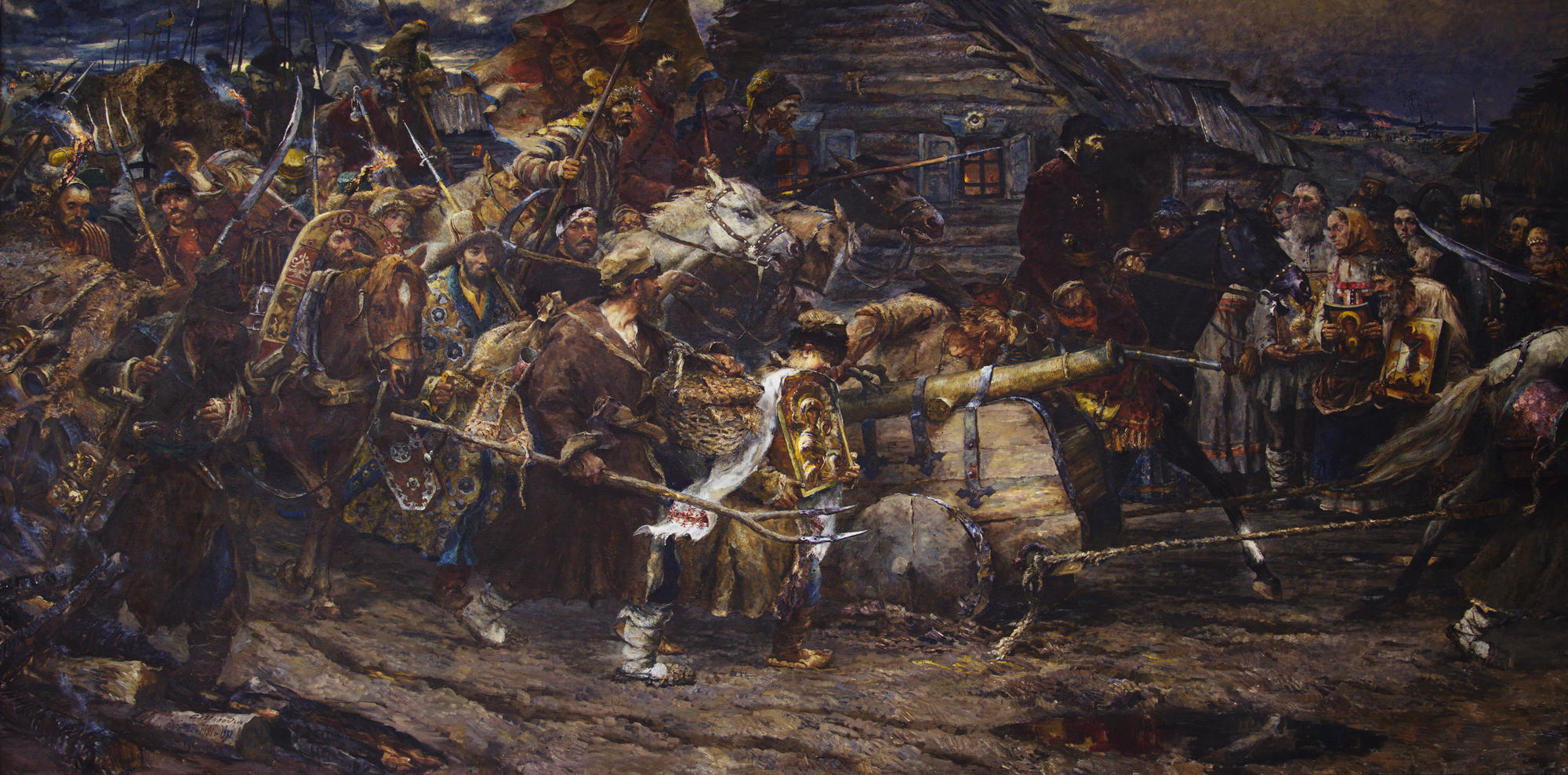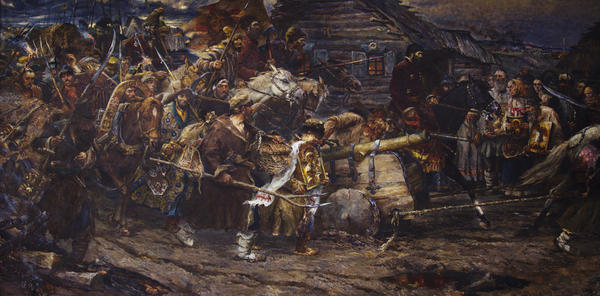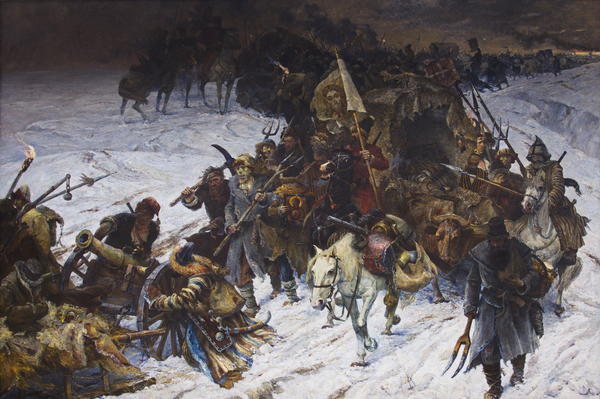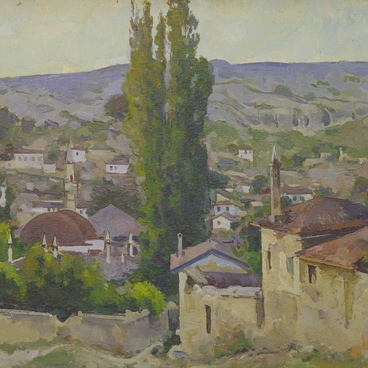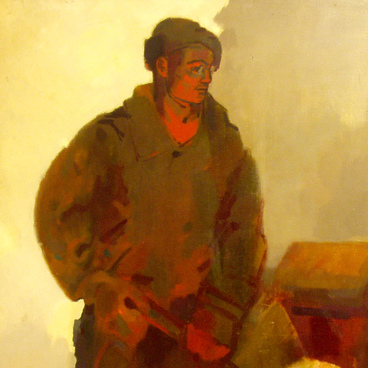Stanislav Molodykh addressed the topic of the Emelyan Pugachev uprising twice. In 1980, he painted the Pugachev Rebellion, and during the next two years, he worked on the canvas 1773. The artist performed both works in dark, gloomy colors with black spots, also using various shades of gray and crimson red. Both canvases are large: one occupies more than 15 square meters, and the second, more than 12.
1 / 6
#1
Stanislav Molodykh
1773
#2
#18
Stanislav Molodykh. The Pugachev Rebellion, 1980.
#17
However, the pictures The Pugachev Rebellion and 1773 are different in their mood. The first canvas depicts Emelyan Pugachev as a proud rider on a white horse: the Cossack chieftain looks like a commander taking a parade, and his associates merge into monolithic, invincible cohorts.
#9
In the canvas 1773, Pugachev is slouching in the saddle wearily, looking gloomy and depressed. The canvas is filled with symbolic details hinting that the leader of the uprising will soon be deprived of his former glory. The villagers are greeting the ataman and his army with icons as long-awaited guests; however, anxiety and distrust can be read in the peasants’ faces. The pike of one of the riders behind Pugachev is pointing at the ataman’s head, symbolizing the imminent betrayal of the Cossacks. The pool in the foreground is reflecting the ataman’s red caftan, thus looking like a pool of blood. This is a metaphor for the coming death of the rebel chieftain.
#14
The pike of one of the riders behind Pugachev is pointing at the ataman’s head, symbolizing the imminent betrayal of the Cossacks. The pool in the foreground is reflecting the ataman’s red caftan, thus looking like a pool of blood. This is a metaphor for the coming death of the rebel chieftain.
#19
Stanislav Molodykh painted his canvases very quickly; however, preparation for work could take him several years. The artist made lots of preliminary sketches, chose best angles of sight and color palettes, and built the composition. The artist usually drew sketches for large paintings with charcoal. Sometimes Molodykh got so carried away with his work that he wiped his brushes with the lining of his own jacket instead of a special cloth.
#20
For several years, the artist worked in the studio of Viktor Orekhov, having painted mainly still lives, landscapes and portraits there. However, Molodykh’s most famous works were genre paintings based on historical events. In total, he created about a dozen large-scale paintings.
#21
Belgorod State Art Museum
читать дальшескрыть
00:00
00:00
1x
1773
Время создания
1980 to 1982
Размер
250x490 cm
Техника
Canvas, oil
Коллекция
7
Открыть в приложении
Поделиться
